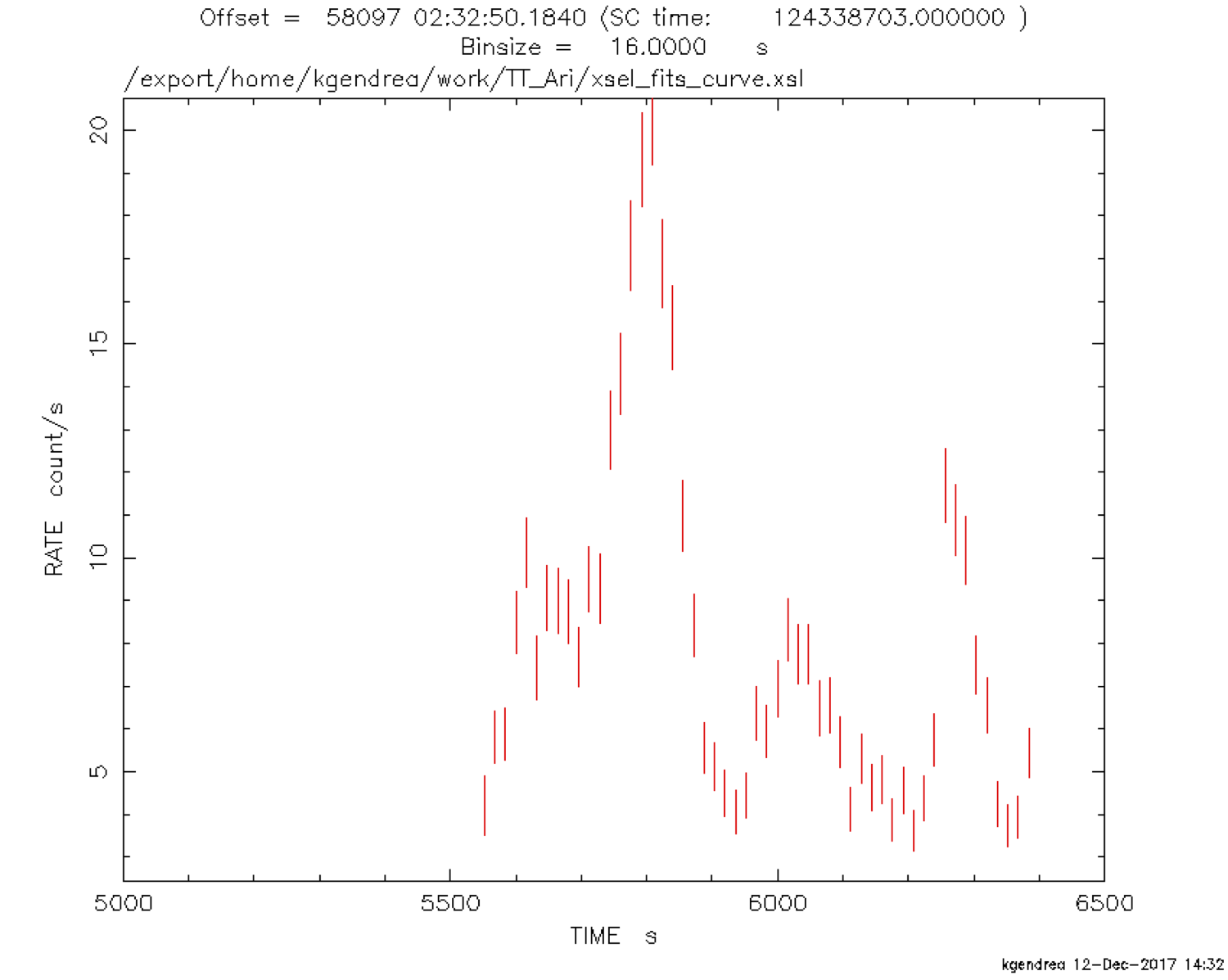NICER / ISS Science Nugget for December 15, 2017NICER sees X-ray flares from cataclysmic variable TT ArietisOver the 9 – 10 December weekend, NICER conducted a Target of Opportunity (TOO) observation of the "cataclysmic variable" (CV) binary star system TT Arietis. The TOO was triggered by scientists at the University of Southampton, Northwestern University, and other institutions who arranged a broad multiwavelength coordinated campaign to observe TT Arietis simultaneously (to the extent possible) with the Very Large Array (VLA) radio telescope in New Mexico, the Boyden observatory in South Africa, NASA's Swift observatory, the Asiago Observatory in Italy, the Palomar observatory in California, the Apache Point Observatory in New Mexico, the Center for Backyard Astrophysics (CBA) and the American Association of Variable Star Observers (AAVSO) across the United States, in addition to NICER on the ISS. NICER provides substantial sensitivity and spectral capability in X-rays to complete the full physical picture of TT Arietis through this campaign. Why TT Ari? Thanks to the sensitivity upgrades in radio telescopes, we have only recently discovered that weakly-magnetic CVs are significant radio emitters. The radio emission mechanism is not yet understood, and to date we only have radio observations for a handful of them. For the majority of those observed, the emission is consistent with synchrotron radiation. An interesting question then is: do they launch jets? It has been accepted for many years that CVs do not launch jets; they have even been used to constrain jet-launching models. TT Ari, however, is an outlier, showing highly circularly-polarized flares that look more like solar flare analogues. This brings up an interesting possibility about the secondary (mass donor) star in the system. It is an M-dwarf, and isolated M-dwarfs can be flare stars, so it is possible that the secondary star is flaring. But the secondary star is rotating with a period of about 3.3 hours (significantly faster than isolated stars). Because magnetic activity is believed to correlate with spin rate, CVs could offer a unique, previously inaccessible opportunity to test "dynamo mechanism" theoretical models for how stellar magnetic fields are generated, including at extreme rotational velocities. Finding out what causes the radio emission in CVs will therefore have broad implications. By virtue of the flexibility afforded by being on the ISS, NICER could be quickly incorporated into this massive observing campaign. NICER's sensitive X-ray measurements of TT Ari will be used to determine the level of flaring from the M-dwarf on short timescales as a measure of stellar activity, and to look for correlations and time lags between the radio, optical, and X-ray variations. NICER collected 4,127 seconds of data during this campaign and recorded significant variability. The figure shows detail of one of the observation periods exhibiting rapid X-ray flaring. NICER
|



